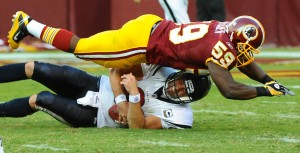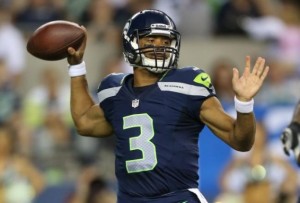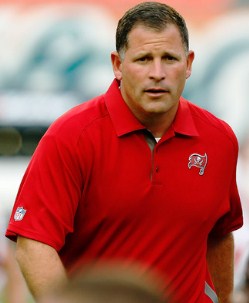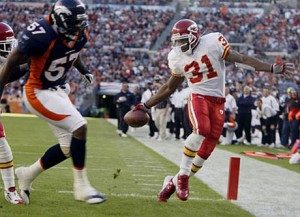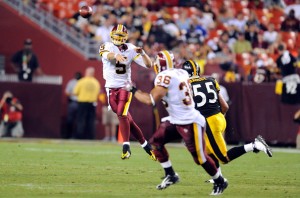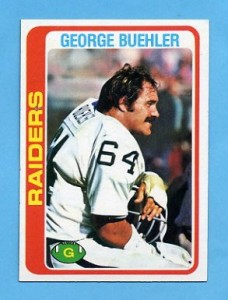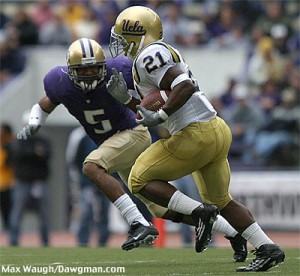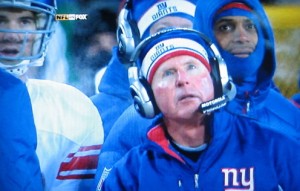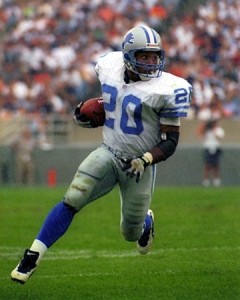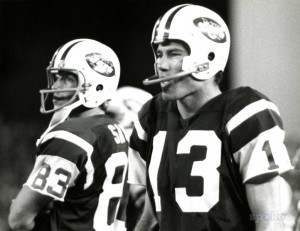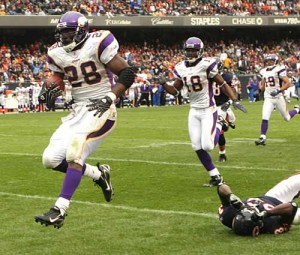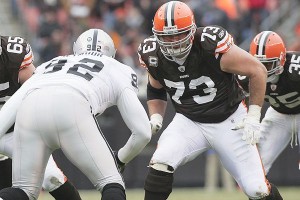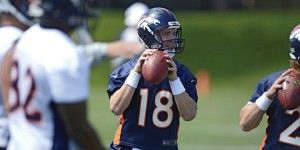
The man with the second longest TD streak played for the Chargers...
Last year, I noted that
Drew Brees had thrown a touchdown
in 37 consecutive games and examined his chances of breaking the NFL record. The current mark is held by
Johnny Unitas, who threw a touchdown in
47 consecutive games from 1956 to 1960. By the end of the 2011 season, Brees had upped his streak to 43 games, which positions Brees to break the record in week 5 of this season, against his former team, the San Diego Chargers, on Sunday Night Football.
Assuming Brees breaks the record, we can expect a four-hour telecast devoted to the greatness of Drew Brees, which is largely warranted. Brees is a future Hall of Famer and one of the most accurate quarterbacks in the history of the game. And he’ll be breaking one of the oldest records in football, one currently held by the standard bearer at the position.
If you’ve been at Football Perspective for long, you probably know where this is going. How impressive will it be for Brees to break this record? The short answer is, probably not as impressive as you might think.
What are the odds of throwing a touchdown in 47 straight games ? Brees deserves all of the credit and praise he gets for being an elite quarterback, and a Blaine Gabbert-type is obviously not going to be the one to break this record. But the real question we want to ask is what are the odds of a star quarterback throwing a touchdown in 47 consecutive games. We can get a pretty good estimate of that.
In 44 games from 2002 to 2005, Marc Bulger threw a touchdown in 93% of his games, or 41 of 44 games. And in two of the games where he did not throw a touchdown, he threw fewer than five passes. In 73 games from 2000 to 2004, Daunte Culpepper threw a touchdown in 86% of his games. Brett Favre, from 2001 to 2004, threw a touchdown in 95% of his games. Eli Manning, from 2005 to 2011, threw a touchdown in 86% of his starts and was booed by Giants fans in just as many. Peyton Manning, excluding his rookie year, threw a touchdown in 87% of his games with the Colts. Philip Rivers once threw a touchdown in 50 of 54 straight games. Aaron Rodgers has thrown a touchdown in 50 of his last 53 games, with one of his zeroes coming in a partial game against the Lions. Tony Romo has thrown a touchdown in 90% of his games since 2007, and 92% of those games if you exclude two games he did not finish. Matt Ryan has thrown a touchdown in 30 of his last 31 games. Matthew Stafford has thrown a touchdown in 28 of his last 30 games, with one of his shutouts coming in a game he did not finish due to injury. From ’99 to ’01, Kurt Warner threw a touchdown in 93% of his games.
And then there’s Tom Brady. Since 2007, Brady has thrown a touchdown in 92% of his starts, or 94% if you exclude his game against the Chiefs when he tore his ACL in the first quarter. Brady has also thrown a touchdown in each regular season game the past two seasons, which means he could also break Unitas’ mark in 2012.
There is obviously an upper limit to the question ‘what is the likelihood of an elite quarterback playing at an elite level throwing a touchdown in any given game?’ Last year, I speculated that Brees’ likelihood was around 89-91%, which in retrospect, might be a little low. The upper limit is probably closer to 96 or 97%, although obviously very few quarterbacks could get there. If we assume complete games — i.e., that the quarterback won’t get injured or get benched or rested — maybe a star quarterback in today’s game has a 94% chance of throwing a touchdown in any given game.

... as did the man with the longest streak
In that case, such a quarterback has a 5% chance of throwing a touchdown in 48 consecutive games. In some ways, of course, this is a “
what are the odds of that” sort of question. Yes, Brees is at 43 in a row, but he’s not alone. Brady has thrown a touchdown in every game the last two seasons. Stafford has done it in 18 straight games, Rodgers for 17, and Ryan is at 15. And, of course, players like
Kurt Warner and
Brett Favre and
Peyton Manning have played at elite levels for stretches just like Brees.
Perhaps the better question is, assuming 14 elite quarterbacks playing at elite levels play in 48 straight games, and each has a 94% chance of throwing a touchdown in any given game, what are the odds that none of them go 48/48? The answer to that: 48%. In other words, it is more likely than not that some quarterback would break the record.
Brees deserves all the praise in the world for essentially putting himself at the upper limit of elite quarterback play. He deserves credit for having a quick release and excelling at pre-snap coverage, which limits the amount of hits he takes. On the other hand, he’s fortunate to have almost entirely avoided playing in poor weather. He’s fortunate to have avoided injury on the hits he has taken, and to have not played for a coach that chose to bench him for a meaningless game after a drive or two (in fact, he missed week 17 of the 2009 season entirely, keeping his streak alive). He’s also fortunate that he’s thrown a touchdown in 43 games and not 41 or 42 out of 43, like many other elite quarterbacks. Brees has had bad games during this streak — in 7 of them, he’s averaged 4.8 AY/A or fewer — but he always managed to throw at least one touchdown. That’s less skill than luck, and you can read about some of Brees’ near misses here.
The skill involved for Brees is getting himself to that upper limit. Given enough quarterbacks playing at elite levels for enough years, Unitas’ record was bound to fall. Brees happens to be one of those quarterbacks.



